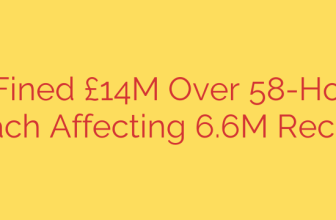
Digital First Responders: The Evolution of Crisis Connectivity Technology
When a natural disaster strikes, the first things to fail are often the invisible networks that power our modern world. Cell towers go down, power grids collapse, and fiber optic lines are severed. In that moment of chaos and isolation, the most critical need—after immediate physical safety—is communication. For over two decades, specialized teams have been deploying to the front lines of these events, acting as digital first responders to restore the vital link of connectivity.
The journey of disaster response technology is a story of remarkable innovation, driven by lessons learned in the harshest conditions imaginable. From the devastating floods of Hurricane Katrina to the complex challenges of modern storms, the tools and strategies used to bring communities back online have undergone a profound transformation.
From Basic Access to Robust Networks: A Technological Leap
In the aftermath of a catastrophic event like Hurricane Katrina, the primary objective was simply to establish a dial tone. The focus was on providing basic voice and internet access for emergency operations centers and first responders. The equipment was bulky, the setup was time-consuming, and the goal was functional, not sophisticated.
Fast forward to today, and the difference is night and day. Modern crisis response is built on speed, resilience, and security.
Speed of Deployment: Teams can now deploy entire communication hubs in a matter of hours. Today’s response toolkit includes satellite uplinks, secure Wi-Fi access points, and cloud-managed networks that can be operational almost immediately upon arrival. This rapid deployment is crucial for coordinating search and rescue efforts and delivering aid where it’s needed most.
Advanced Capabilities: It’s no longer just about a simple internet connection. Modern emergency networks provide secure, high-speed connectivity capable of supporting everything from video conferencing for medical consultations to processing financial aid applications for displaced families. This allows recovery efforts to begin while the disaster is still unfolding.
Resilience and Security: The networks established in disaster zones are built to withstand challenging environments. Using ruggedized equipment and secure protocols, these pop-up networks ensure that sensitive communications for government agencies and relief organizations are protected from cyber threats, which can unfortunately spike during times of crisis.
More Than Technology: The Power of Proactive Partnerships
One of the most significant shifts in disaster response has been the move from a reactive to a proactive model. In the past, tech teams would often arrive after the worst had happened. Now, the work begins long before a storm makes landfall.
Effective crisis management relies on proactive public-private partnerships, where tech experts work alongside government agencies and non-governmental organizations (NGOs) before, during, and after a disaster strikes. By pre-staging equipment, integrating with emergency plans, and understanding the specific needs of a region, response teams can hit the ground running and make a more immediate impact.
This collaboration ensures that technology is not just deployed, but that it serves the human element of the crisis. Restoring connectivity is a lifeline that enables survivors to contact loved ones, access critical financial aid, and begin the long process of recovery. It powers the shelters, command centers, and medical tents that form the backbone of any relief effort.
Key Takeaways and Preparedness Tips for Your Organization
The principles that guide large-scale disaster response can also be applied to business and personal preparedness. Keeping your own operations and family safe requires a forward-thinking approach to connectivity and security.
Build a Resilient Network: Don’t rely on a single point of failure. Businesses should invest in redundant internet connections (e.g., fiber and cellular backup) and ensure critical data is backed up to geographically diverse cloud locations. This ensures your operations can continue even if local infrastructure is compromised.
Develop a Clear Communication Plan: When a crisis hits, how will you contact your employees or family members? Establish a communication tree and have multiple methods of contact, including text-based services, satellite phones for key personnel, and an out-of-state contact person as a central point of information.
Prioritize Cybersecurity in a Crisis: Scammers and cybercriminals often exploit disasters to launch phishing attacks and other scams. Train your team to be extra vigilant about suspicious emails or requests for information during an emergency. Always verify requests through a secondary communication channel.
Ultimately, the evolution of disaster response technology is a testament to human resilience. It shows that with preparation, innovation, and collaboration, we can build systems that not only withstand the storm but also help us rebuild stronger in its wake.
Source: https://feedpress.me/link/23532/17185996/20-years-of-cisco-crisis-response-reflecting-on-resilience-from-hurricane-katrina-to-helene








